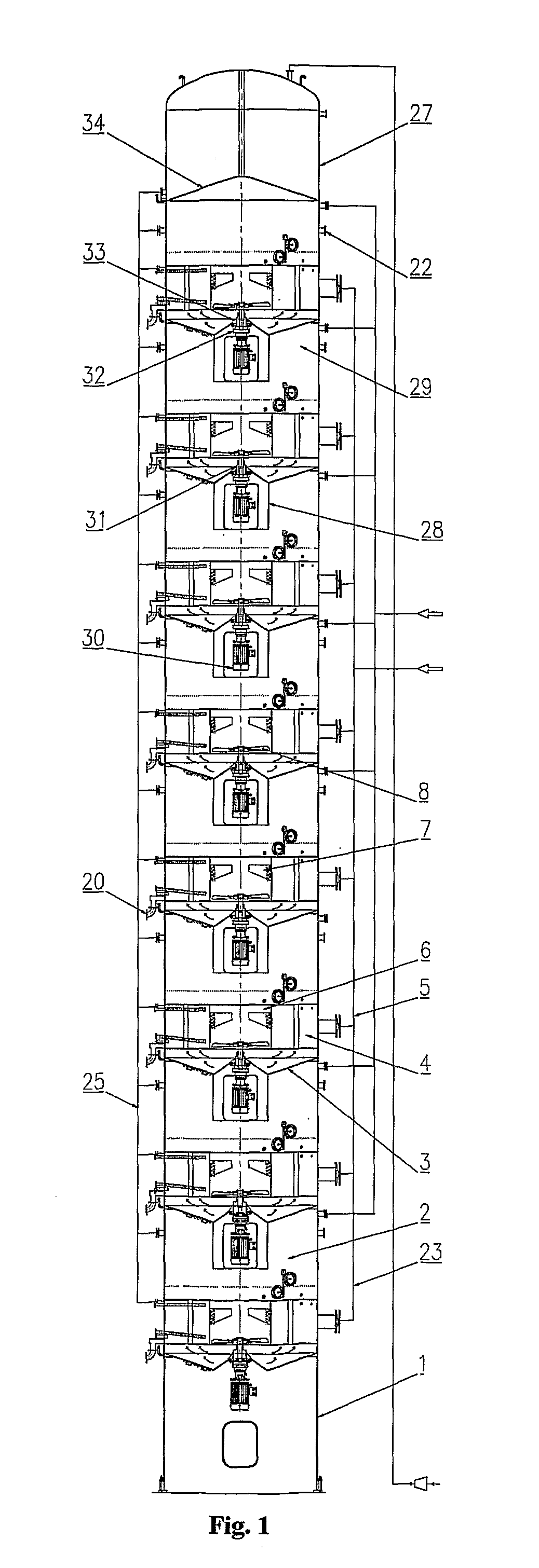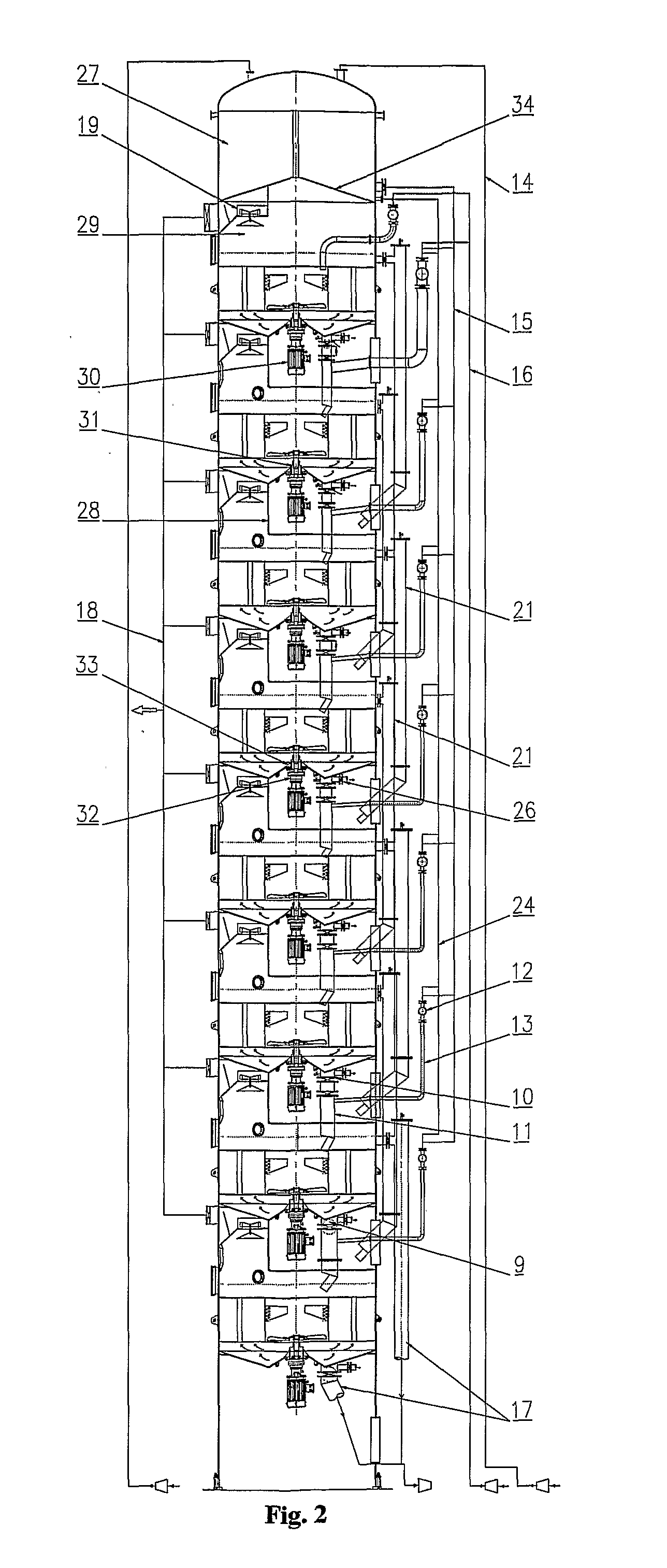However, it had the following disadvantages:1. Efficiency: Low efficiency of the crystallizer-
evaporator due to all stages being performed in one vessel only;2. Steam consumption: higher both quantitatively and qualitatively;3. Product quality: Slow and uneven growth rates.4.
Dead Time: It is the time during which one process is completed and the next has to be started.
Since, the process was discontinous,
time gap had to be given to clean the vessel and make it operational for a fresh batch, resulting in ‘
dead time.’5.
Variable load: Fluctuating heating steam demand and variable vapour pressure requirements resulting in higher
energy consumption, uneven load on boiler and condenser respectively, resulting in increased cost of production and lowered efficiency of operations.
These disadvantages led to the development of continuous vacuum pans wherein process is carried out by continuously feeding the seed crystals and the sugar solution to an
evaporator-crystallizer, while withdrawing the massecuite (highly concentrated suspension) from the
evaporator-crystallizer.
However, the horizontal type continuous vacuum pan had several disadvantages viz.a) Product quality variable: large variation in size of final crystals due to short-circuiting of the massecuite flow-path;b)
Processing difficulties: high-purity syrups were difficult to process;c) Incrustation problem: prone to incrustations, especially in the openings between the compartments.
Incrustations are not a desirable feature as they lower
heat transfer efficiency and hinder circulation / movement of syrup, reducing yield;d) Lack of By-passing provision: In horizontal type, all compartments are interconnected and placed in the same vessel.
Hence, in event of maintenance of any one compartment, entire unit has to be halted.e) Quality reduction in final product: conglomeration & false grain formation is more leading to reduction in quality of final product.e) Yield reduction: short-circuiting and splashing of massecuite from one compartment to other led to poor or reduced yield.f) Higher space requirement: requires considerably higher floor space.
It may not be possible for a factory using an older type batch pan with mechanical
agitator which utilizes much lesser space, to replace it with a continuous horizontal pan.g) Complex and Costly Design: Continuous vacuum pans have complex and costly design with non-identical compartments.
Various attempts, in horizontal continuous vacuum pans, to remedy the above disadvantages resulted in undesirable complications in apparatus and control systems making the structural and
process engineering factors unfavourable.
It was realized that disadvantages of the horizontal
system, especially those connected with the quality of the product crystals viz. large
crystal size variation, conglomeration, false grain formation, etc. also arise due to different conditions at separate stages in a pan.
A reliable operation without stirrers (mechanical circulation) is not possible and may lead to
sedimentation of the crystals (Austmeyer, K. E.; Schliephake, D.; Ekelhof, B.; Sittel, G.
However, such an arrangement violates a fundamental feature of vertical continuous vacuum pans viz. stirrers mounted on a common shaft present a
disadvantage when one of the chambers is taken out of operation for cleaning or other reasons.
The underlying cause for it was the limited number of stirrer-equipped evaporating-
crystallization chambers.
However, for economic reasons, this concept could not be implemented till date.
Major problems associated with an increase in number of treatment chambers are as follows:1.
Increased height of the apparatus;2. Stirrer shaft becomes very long, both in case of top mounted motor of the mechanical stirrer and in case of stirrers mounted on a common shaft.3. Associated technical problems: e.g. installation complexities, maintenance problems, increased
noise levels, alignment / guidance requirements, etc.
From the above, it is clear that though vertical type continuous apparatus offered distinct advantages over the horizontal
system, it also had technical limitations regarding the number of stages which could be incorporated in a single apparatus.
However, such a ‘twin-
tower’ arrangement also has disadvantages.i) It adds to energy requirements e.g. pumping andii) leads to decrease in overall performance and efficiency of the
system besides the disadvantages mentioned above.iii) Also there are problems associated with the bypassing of chambers in such an arrangement.
 Login to View More
Login to View More  Login to View More
Login to View More 


